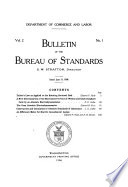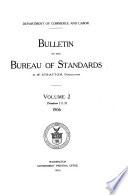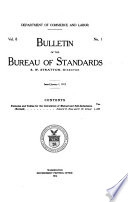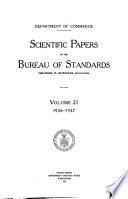 | United States. Bureau of Standards - 1906 - 522 páginas
...radii of the two circles, d is the distance between their centers, and tJAa k=—.. . *---.^==i = s1n 7 /•"and E are the complete elliptic integrals of the first and second kind, respectively, to modulus k. Their values may be obtained from the tables of Legendre, or the values of Mt- \irJAa may... | |
 | United States. Bureau of Standards - 1906 - 542 páginas
...where (34) and where and c= in the expression for V b+b' , c=- — — c' i in the expression for Vl F and E are the complete elliptic integrals of the first and second kinds respectively, to modulus £, where __ -« 'T and ^(y) are the incomplete elliptic integrals... | |
 | United States. National Bureau of Standards - 1906 - 540 páginas
...where and .• in the expression for V b+b' , . .. . , ., f=— — — c 1n the express1on for Vl F and E are the complete elliptic integrals of the first and second kinds respectively, to modulus £, where *«=-. and ^"(y) are the incomplete elliptic integrals... | |
 | 1912 - 512 páginas
...GROVER. 1HE force between two parallel coaxial circular currents was given by Maxwell1 in the form where A and a are the radii of the two circles, z...and second kind respectively, to the modulus k = sin f = </(A + o)1 + z1 Only for circles of equal radii is the force a maximum when the circles are in... | |
 | 1913 - 560 páginas
...a are the radii of the two circles, d is the distance between their centers, and k = + a)2 + sin 7. F and E are the complete elliptic integrals of the first and second kind, respectively, to modulus k. He also obtained an expression for the mutual inductance between coaxial circles in the... | |
 | United States. Bureau of Standards - 1913 - 840 páginas
...r? \n. — a.— 'ia cos* 7 + 8«, cos* 7! o. jg L 1 <J !« / ' -! *J 800" cos' 7 = — j — -j-4 and F and E are the complete elliptic integrals of the first and second kinds with modulus k = sin 7. When the coils have equal breadth £, = £,= £ and a^ = £',... | |
 | Cambridge Philosophical Society - 1927 - 1078 páginas
...(5-5), *here A is an arbitrary constant and 2 .'o"1 cos2<f>d<j> Jy sin2 <f> (5-51) (5-52), K and E being the complete elliptic integrals of the first and second kind respectively to the modulus sin Jy. By considering the integral in equation (5-51) we can show that r/X or y' steadily increases... | |
 | United States. National Bureau of Standards - 1927 - 934 páginas
...cases n=0 and n= 1 (44) shows that = ¿K(p) (45) 4¿¿(p) ¿ 1)K(¿) _¿E(p)} (46) where K(j4 and E(p) are the complete elliptic integrals of the first and second kind, respectively, whose modulus is p. Another useful relation derivable from (42) and (43) is 1 M =(¿+¿){ ¿ +(3—... | |
 | United States. National Bureau of Standards - 1936 - 786 páginas
...values of Hx and H, are given by the equations: ~D\_(kl> +lz)E(kl') +(k*' +ft)E(k*)J (24) (25) where K and E are the complete elliptic integrals of the first and second kind, respectively, to the indicated moduli. (26) 16D(Dt) (27) Equation 23 was obtained as follows. Let H denote the magnetic... | |
 | 1913 - 772 páginas
...between their planes we have M = 4ir(Aa)1«[(2/* — A)F — (2/*)E], where A=2(Aa)W/[(A-|-a)»+d»]i/», and F and E are the complete elliptic integrals of the first and second kind respectively. If we write, <? + d? = r*, we get from the theory of elliptic functions M = 4jra[log (8a/r) . P —... | |
| |